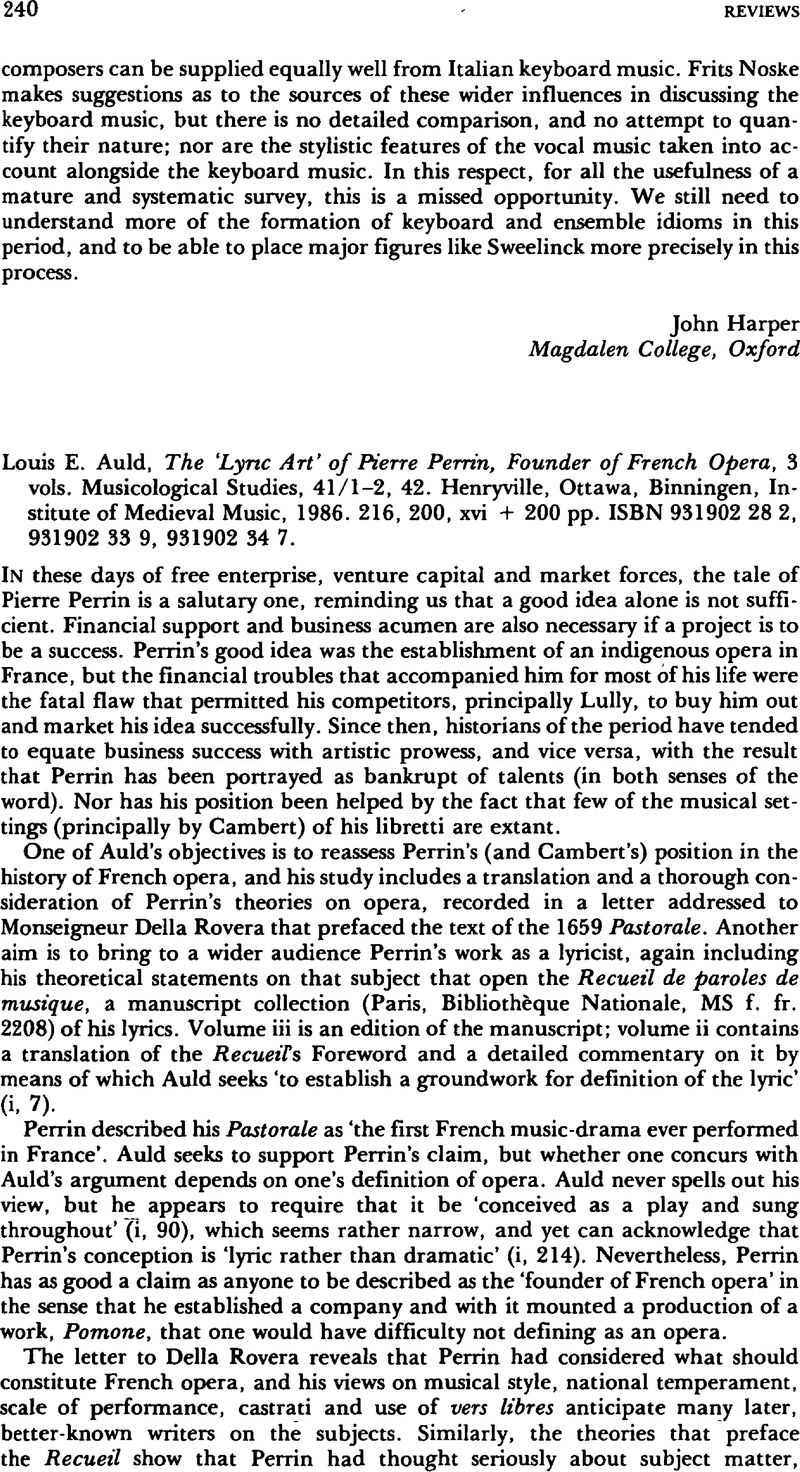No CrossRef data available.
Published online by Cambridge University Press: 01 January 2020

1 The latter receives no comment in either David Tunley, The Eighteenth-Century French Cantata (London, 1974) or Gene E. Vollen, The French Cantata. A Survey and Thematic Catalog (Ann Arbor, 1982), although it is noted in James R Anthony, French Baroque Music (rev edn, London, 1978), 359–60.Google Scholar
2 Girdlestone, Cuthbert, La Tragédie en musique (1673–1750) considérée comme genre littéraire (Geneva, 1972).Google Scholar
3 The LWV numbers refer to Herbert Schneider, Chronologisch-Thematisches Verzeichnis Sämtlicher Werke von Jean-Baptiste Lully (LWV) (Tutzing, 1981).Google Scholar
4 Schneider does not indicate which of the other sources contain this version.Google Scholar
5 See the complete song in Airs de cow pour mix el luth (1603-1643), ed. André Verchaly (Pans, 1961), 164-5. In the preface to this volume, Verchaly includes ‘Du plus doux’ among his examples of those airs that display ‘nobles accents qui annoncent Lully’ (p xii) Auld cites this remark (i, 184) without noting that Verchaly applied it to ‘Du plus doux’Google Scholar